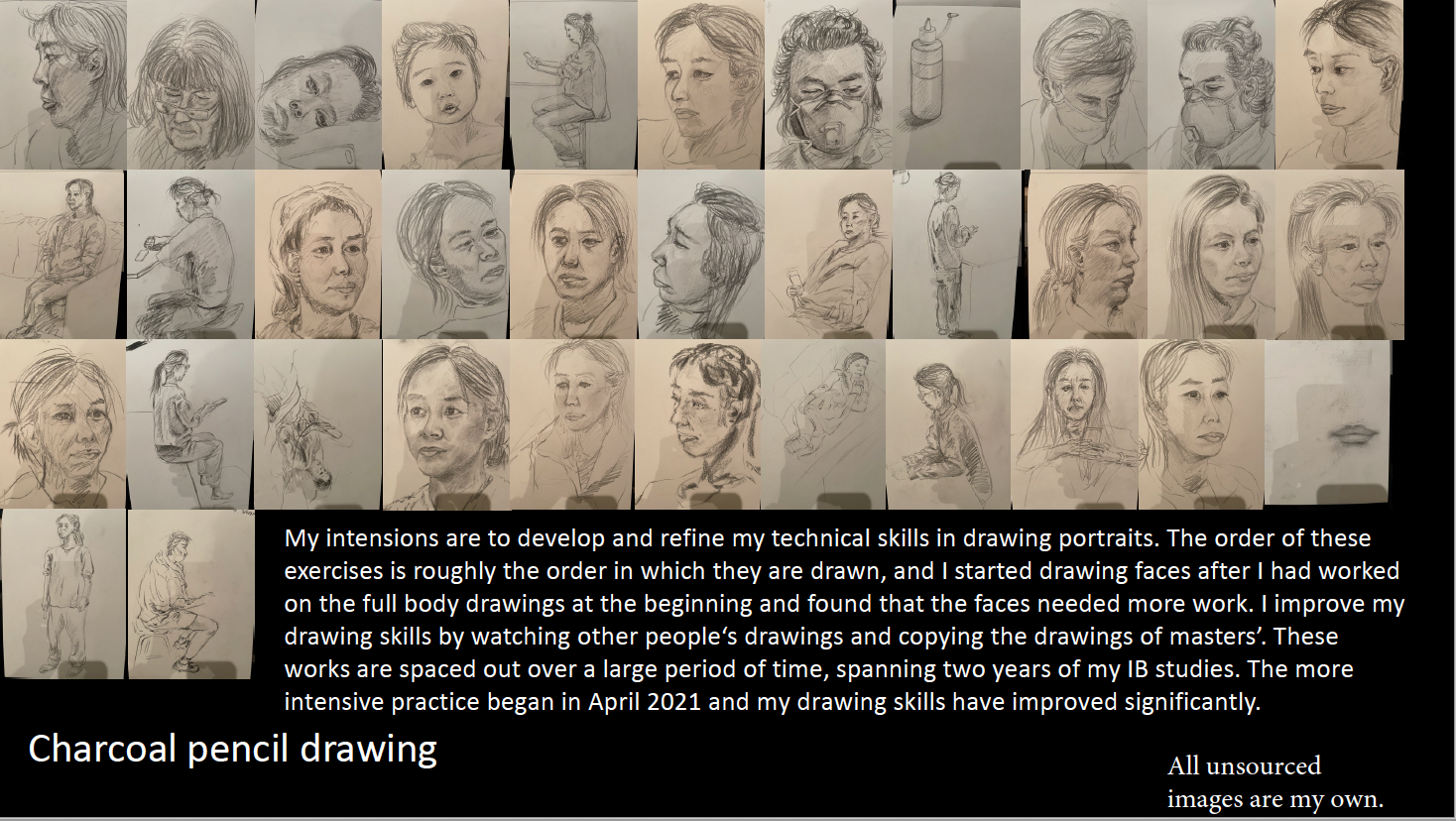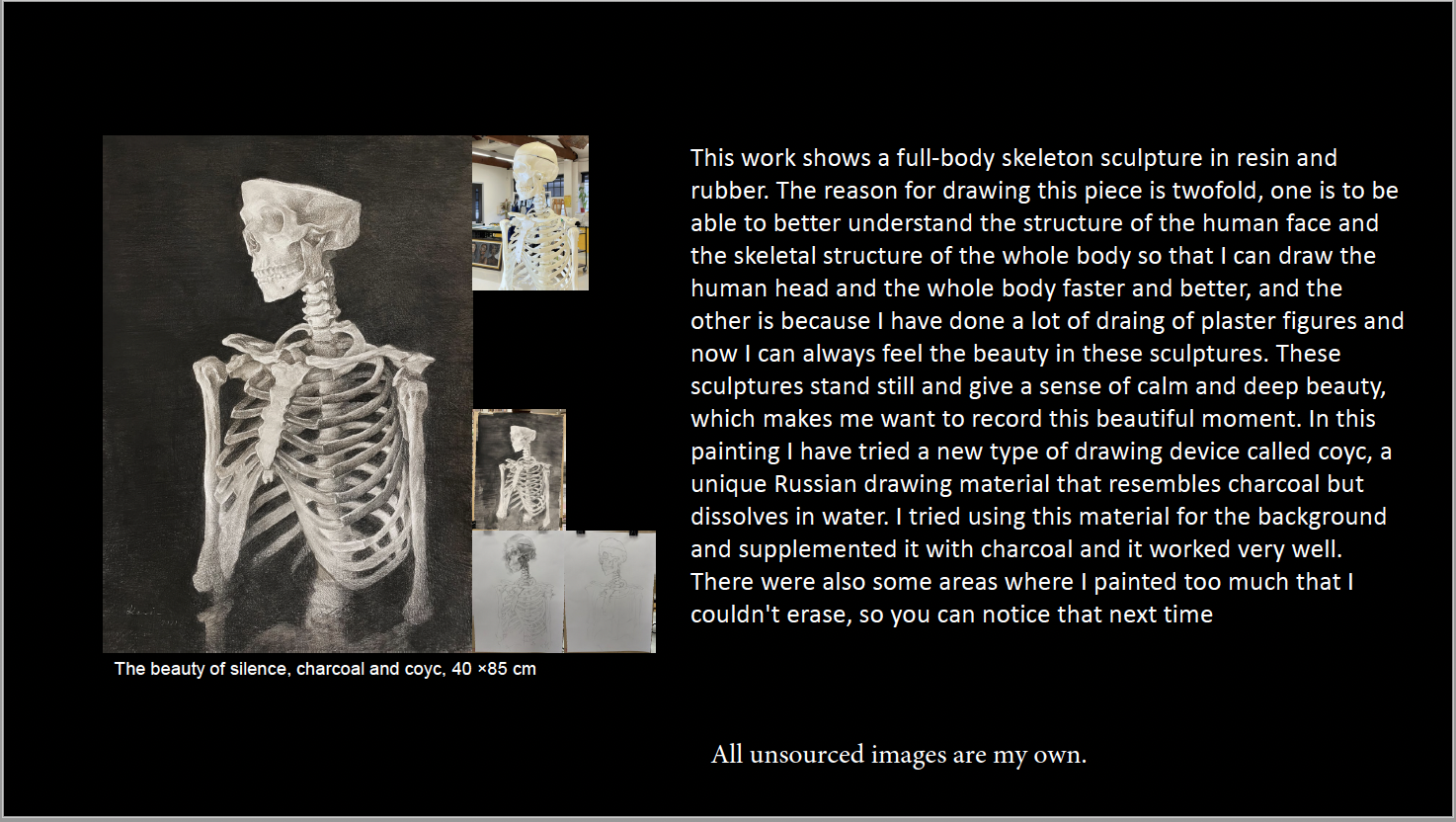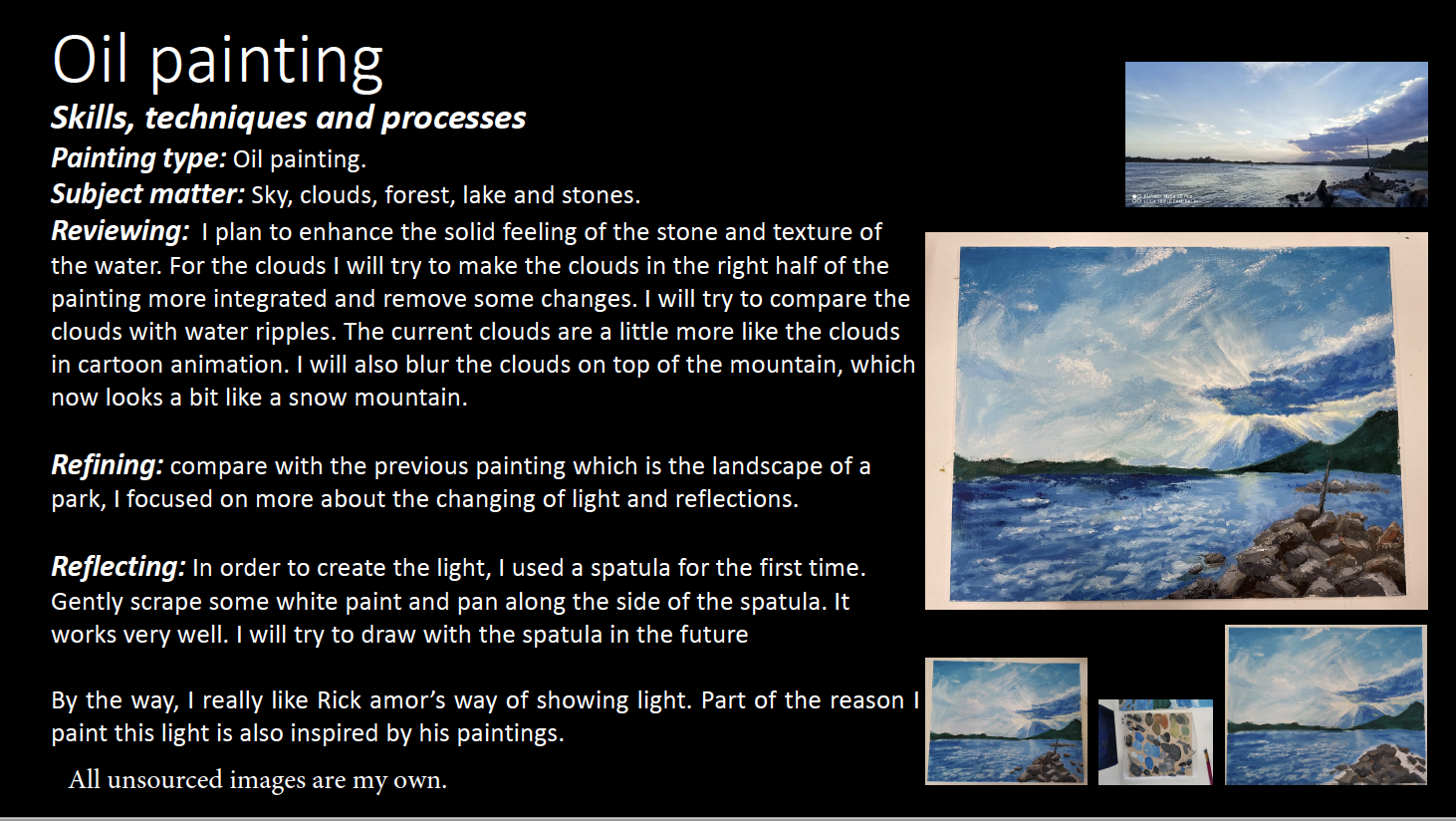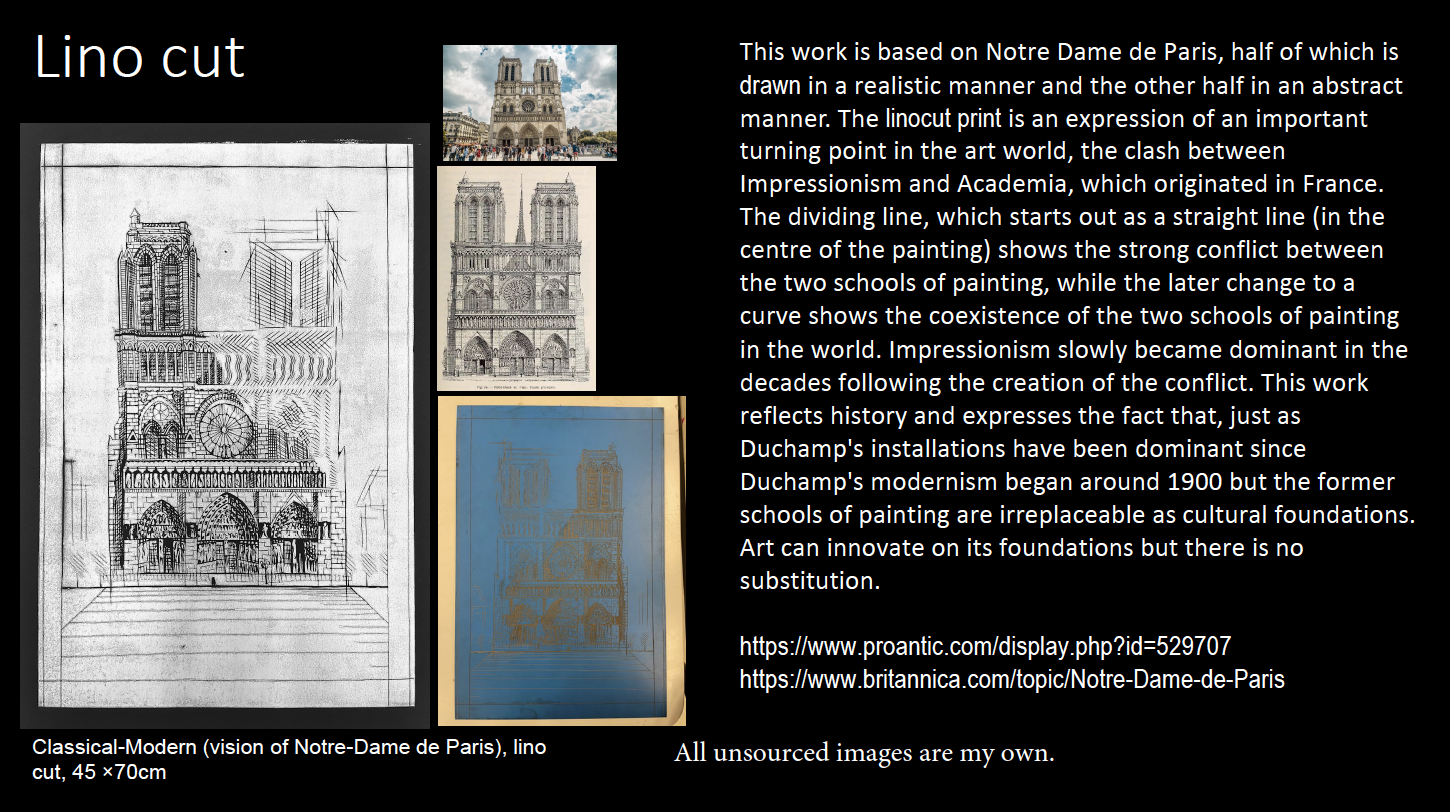IB Visual Arts
Kevin Fu
My intention for the creating this exhibition of artworks is develop and refine my technical drawing and painting skills. While allowing the viewer to see my exploration of drawing and painting techniques, it also allows the audience to reflect on my paintings by looking at them. As an IB student, you should be concerned with society, and through these works I present my views on different events and intellectual aspects, such as my thoughts on the aesthetics of art, my views on the wars taking place in the world today and my philosophical investigations into human development.
My overall concept is the study of human form and figures. The human figure has been an integral part of painting since ancient times, and the face expression and movements of people can represent a variety of meanings and involve different emotions in response to specific subject matter. So in exploring people's understanding of aesthetics and trying to express deeper thoughts, the subject matter I chose is using human figures and ceramic busts. I’ve focused on the use of light to create tone which suggest form and dimension. I’ve used a variety of materials including charcoal, charcoal pencil, oil paints and coyc because I want to improve by using these materials. When I first started drawing, I was first introduced to children's drawings, after which I took up charcoal sketching. Because I am more proficient with charcoal, I do a lot of my work in charcoal and I also experiment with oil painting and sculpture to show my artwork. As each work of art expresses a different point of view each one is an exploration of artistic expression and an inquiry into technique and they communicate their own ideas.
In order to show the progress of technique, I will arrange the exhibition in chronological order of creation. I believe that a good artwork should be able to convey something positive and inspire people to think through what they see. I want the viewer to understand my work by reading my introduction to each piece and to have some empathy with it. I hope the audiences start to look at a range of issues and areas such as war, aesthetics, nature and human beings themselves.
Artists I have studied as inspiration for their specific techniques in drawing include the Fehin's shaping and control of the borderline. Raphael's lineout technique. when I was looking Raphael's work. I was first attracted to his lines, and if I zoomed in, almost all of his lines followed the direction of the human muscles, and I was caught in a dilemma as to whether it was better to show the obvious lines in the picture or to rub more towards the right side of Fechin's work. This was also my attempt to use simple lines to draw the human head. Then I focus on Fechin 's treatment of the edge lines. When I first copied it I thought he didn't seem to have shaped the face much, as if there were no lines, but as I copied it I realised that the face which looks like nothing, actually has a lot of variation. It was like a big wave was coming over me and there were so many details and variations that it was almost too much for me to bear.
I have extended my drawing practise to linocuts and have focused on depicting light as it falls on architecture.


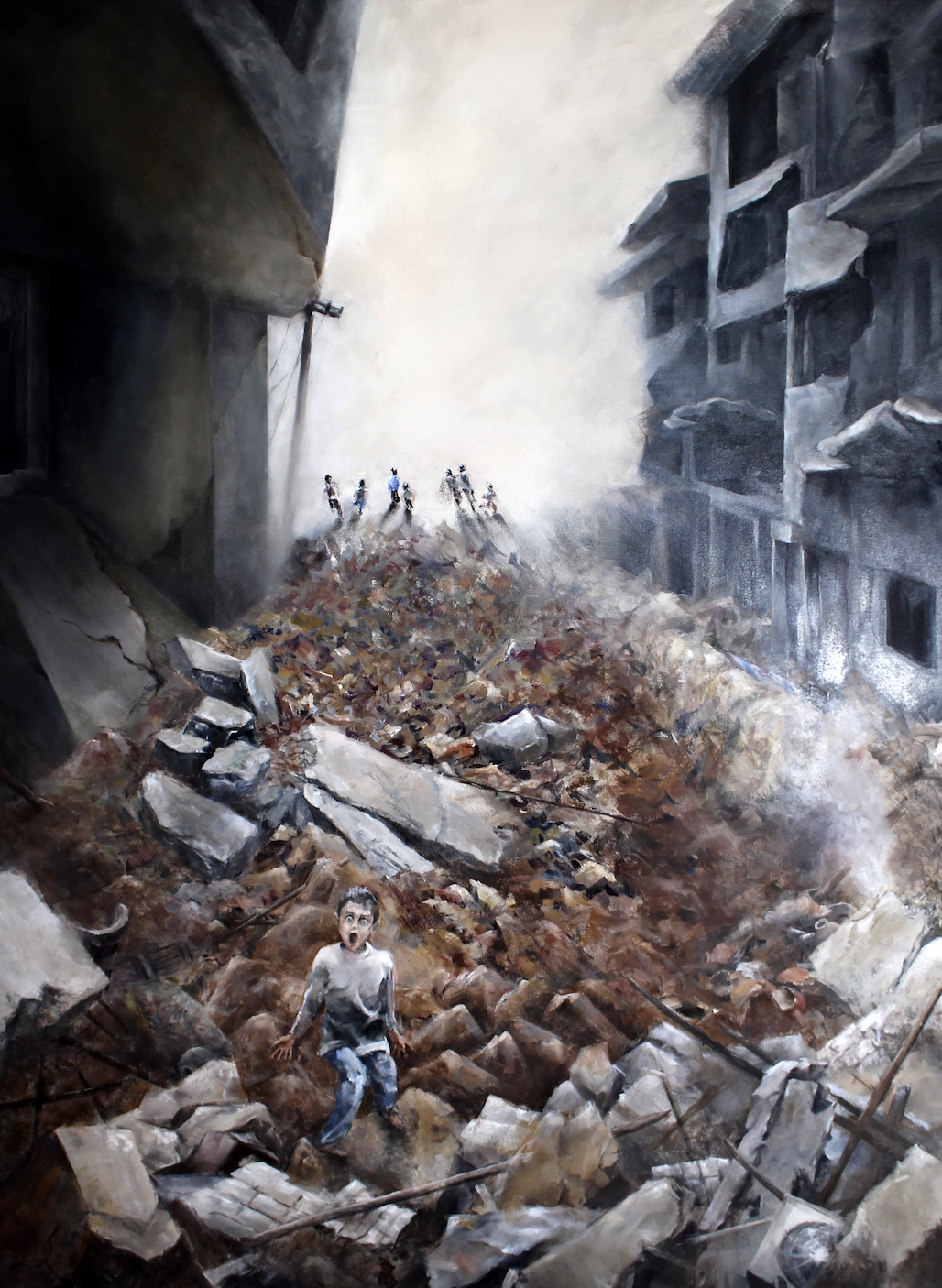
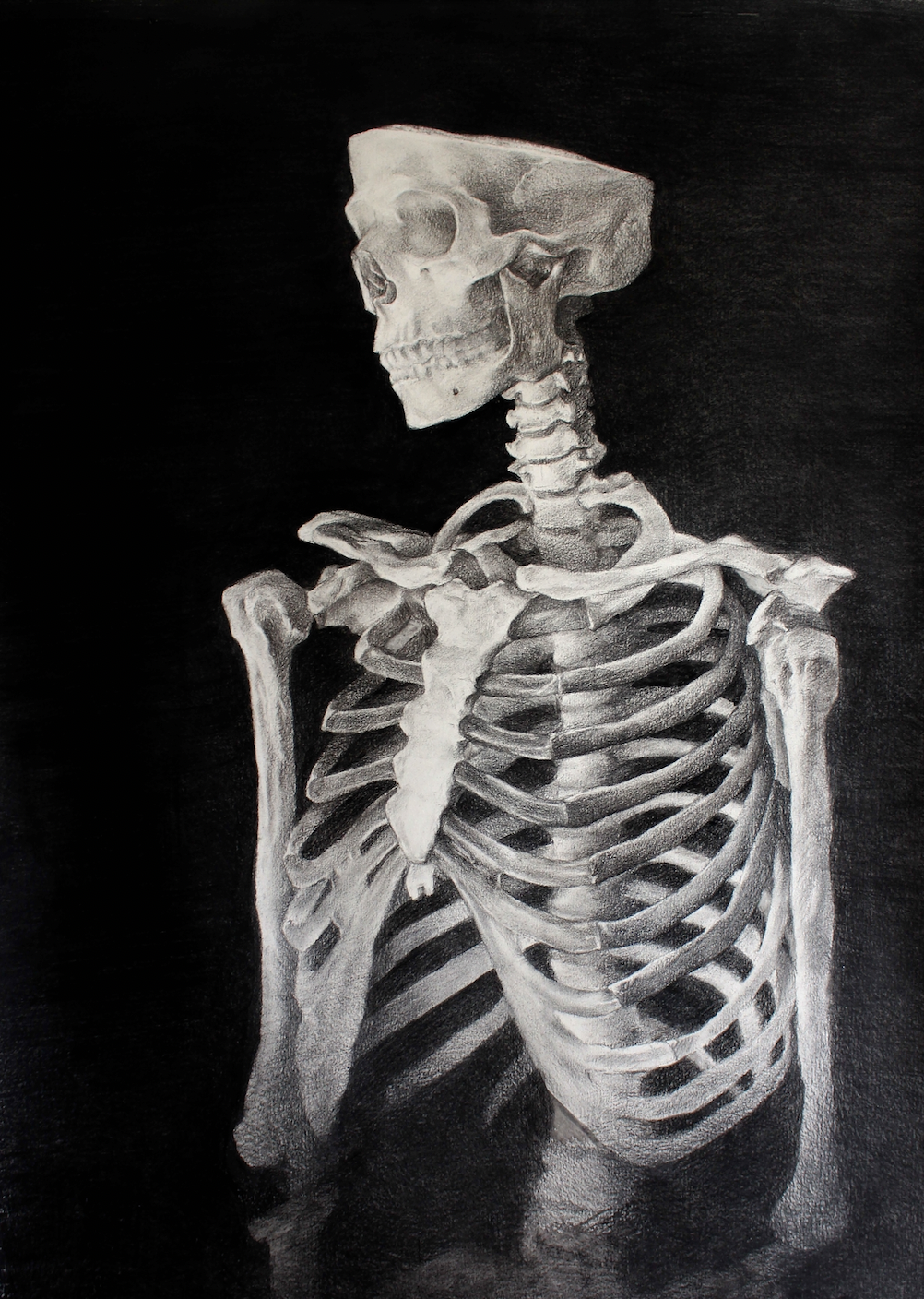
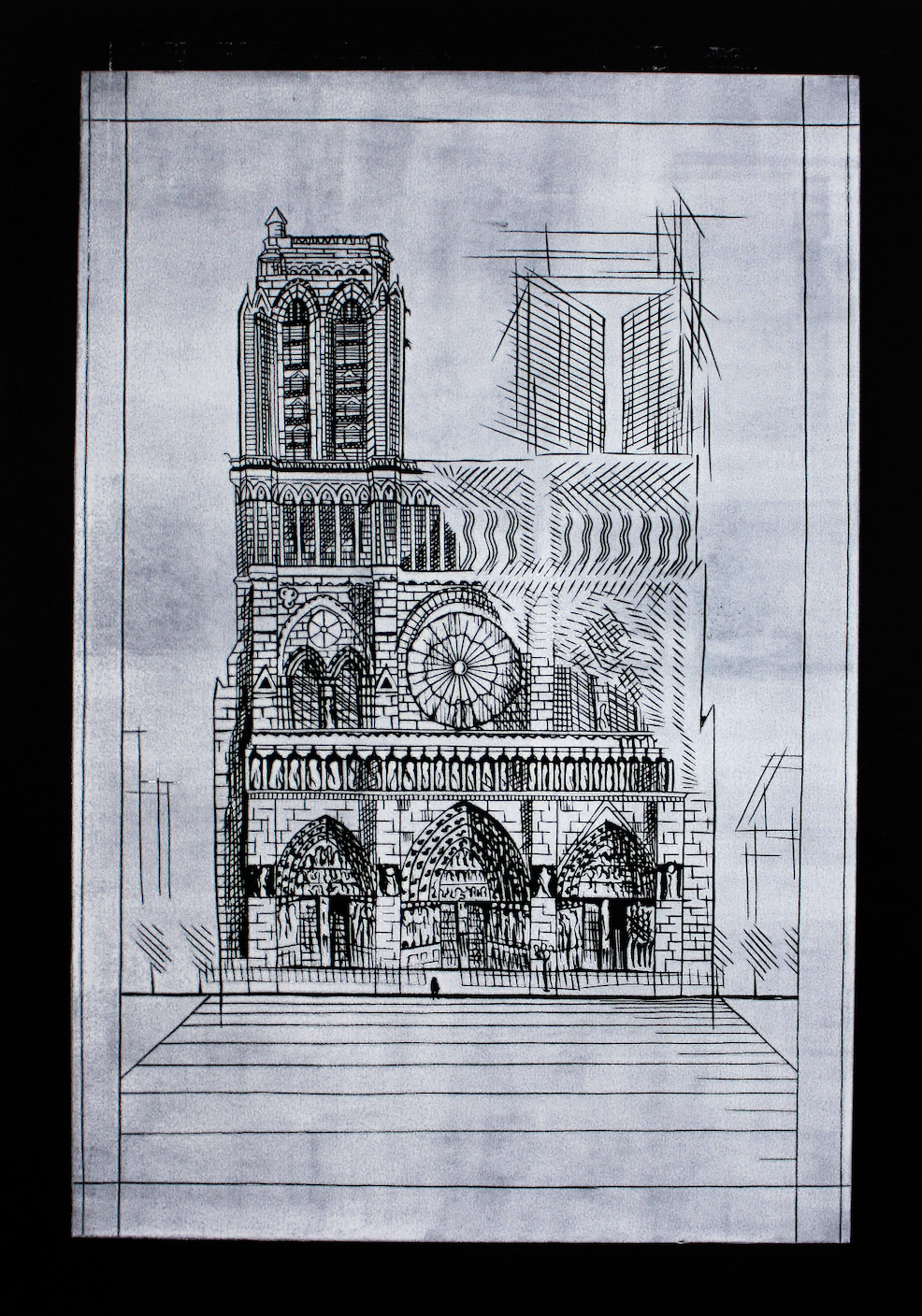

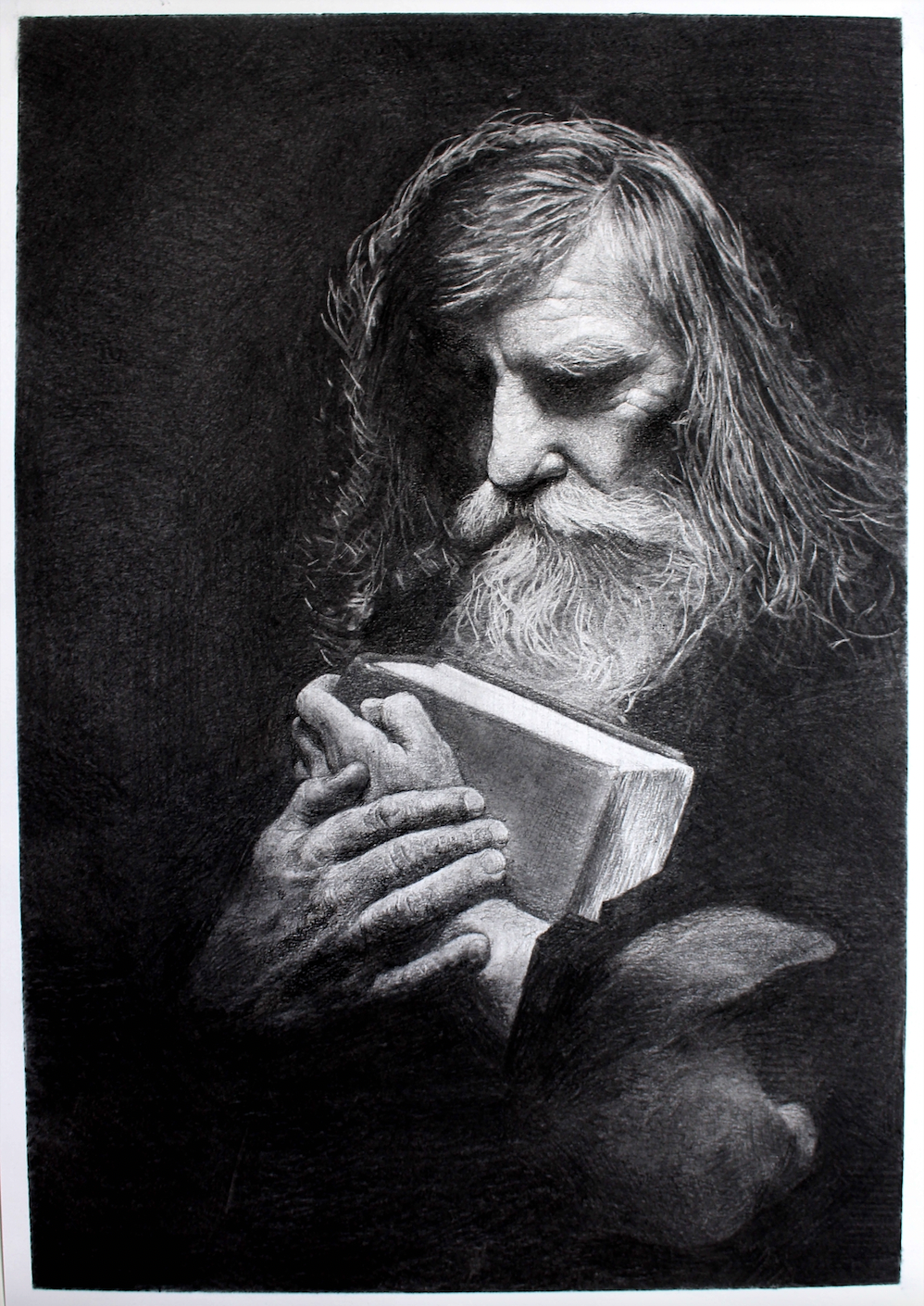

Kevin fu
Aesthetic Exploration (The Goddess of the Harp)
Charcoal drawing on paper,
83 x 45 cm
This pair of drawings of the Goddess of the Harp and the head of the Image of the Greek woman Pageant. They were drawn from plaster sculptures with a focus on showing tonal highlights and shadows and creating a relationship with the foreground and background. The connection between the two works is to express the contradictions and differences. Although one of these two works is broken and the other is complete, they both show the aesthetics of the ancient Greek period. Both works were drawn with charcoal on drawing paper. The first work focuses on shaping the head of the sculpture to reflect the sense of volume.
Aesthetic Exploration (Greek woman Pageant),
Charcoal drawing on paper,
59.4 x 42 cm
The second work was painted after the first one was finished. While paying attention to the composition I focused on creating tones to show the folds in the curtain. This painting also focuses on the texture of different materials, the smooth and shiny silk and the matte texture of the white plaster.
Classical-Modern (vision of Notre-Dame de Paris),
linocut print,
70 x 45cm
This work is based on Notre Dame de Paris, half of which is depicted realistically and the other half in an abstract manner. The linocut print is an expression of an important turning point in the art world, the clash between Impressionism and Academia, which originated in Paris and France. The dividing line, which starts out as a straight line (in the centre of the composition) shows the strong conflict between the two schools of painting, while the later change to a curve shows the coexistence of the two schools of artmaking.
After war
Oil painting on canvas
120 x 75cm
This composition comes from ten sourced photographs. The painting is a portrayal of a scene in the aftermath of war and is intended to express compassion for the people suffering during war. Although I am not from the Middle East, I still feel compassion for the people who are suffering. The child is not the only one in the close up, I have used many common objects such as tiles, air conditioning units, bicycle frames, bears, concrete and clay pots in the ruins at the child's feet. These objects reflect the fact that these ruins were once inhabited by people. The middle of the scene is dominated by the ruins of a collapsed building, while the far distance shows children running in all directions. I learned a lot about painting through this artwork, which improved my technique and increased my ability to paint large format canvases.
The beauty of silence
charcoal and coyc (water soluble charcoal) drawing on paper
85 x 40cm
This work shows a skeleton sculpture. The reason for this drawing is to better understand the structure of the human face and the skeletal structure of the whole body so that I can draw the human head and body faster and better, and because I have done a lot of drawings of plaster figures and now I can feel the beauty in these sculptures. These sculptures stand still and give a sense of calm, which makes me want to record this beautiful moment. In this painting I have tried a new type of material called coyc, a Russian drawing stick that resembles charcoal but dissolves in water. I tried using this material for the background and supplemented it with charcoal and it worked very well.
Curse of knowledge,
Charcoal drawing on paper
59.4 x 42 cm
My drawing is a depiction of an old man holding a book and a pig. The individual images were sourced and placed together in my composition. As I was working on this at night a philosophical concept came to mind, the curse of knowledge. The idea is that when people know something, they can't go back to not knowing it. Man's thirst for knowledge and curiosity has always led him to explore and invent countless devices that facilitate life, but also to develop weapons, technology is a double-edged sword. The old man holding the book can be seen as a learned philosopher, while the pigs represent naive animals. In the painting the philosopher is in pain, worrying about the future of mankind, the pig lives a carefree life.
Seek but fail
Charcoal and coloured pencil drawing on paper
59.4 x 42 cm
This work reflects the wealth gap between people, the differences between people. The hands in the painting are in a begging posture to beg for money, but when the money is spilled, the hands fail to catch any of the gold coins, and all of them slip around the hands. It reflects the difference between the rich and the poor, but also shows the poor people's difficulty in earning money and the rich people's exploitation of the poor. The painting was inspired by the artist Durer's painting "Hand". The painting highlights the poor people's rough clothing by making obvious lines on the clothes.
Life 5 dollars a kilo
Oil painting on canvas
30.5cm x 60.9 cm
This oil painting is a depiction of two fish bought from the market. It is often said that life is priceless, but this is not a strict statement. When both human life and the life of another animal are at stake and only one can survive, the human will be chosen over the other, no matter how precious the animal is. Almost all animals except humans can be measured in terms of money, including the two fish in the painting, echoing the title of this work. I believe that the phrase "life is priceless" is not meant to suggest that the lives of all creatures in the world have the same untouchable status, but rather to warn people to cherish the life in front of them as much as they can and not to trample on it.


